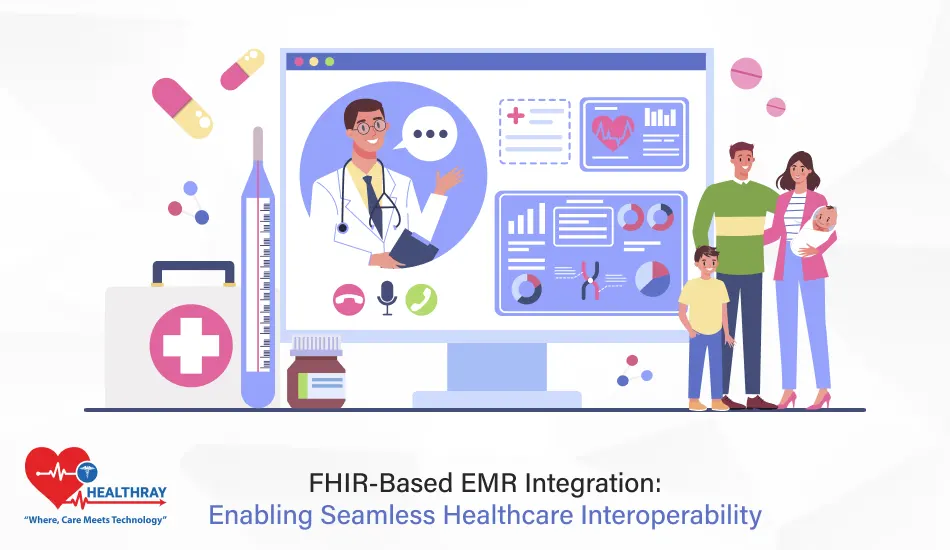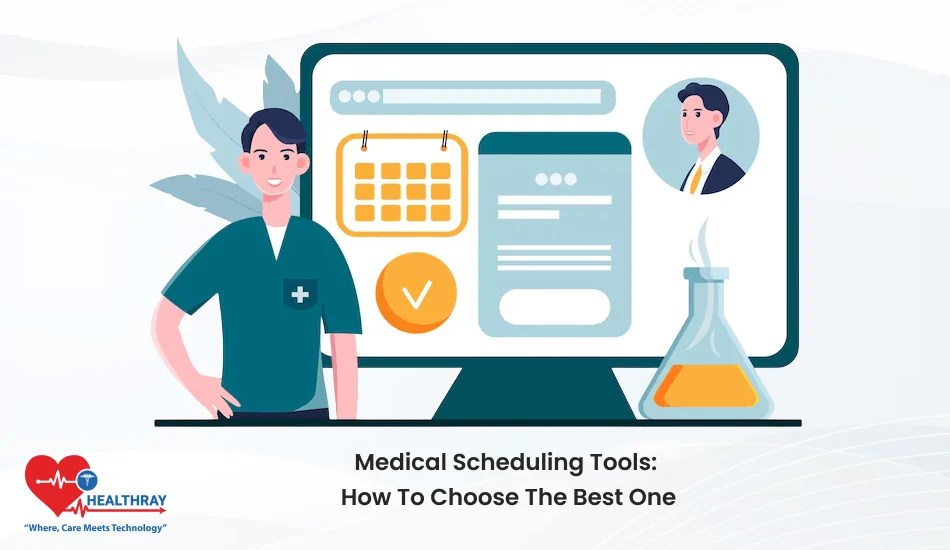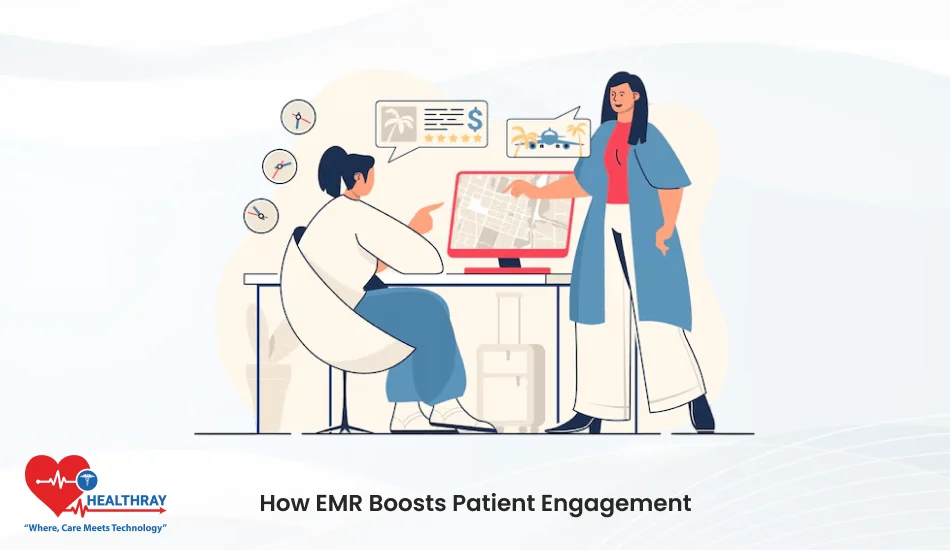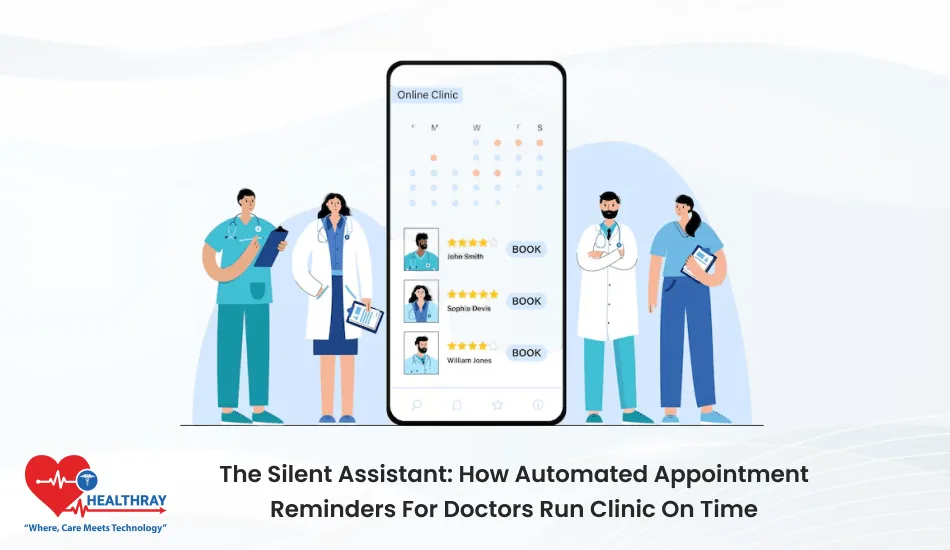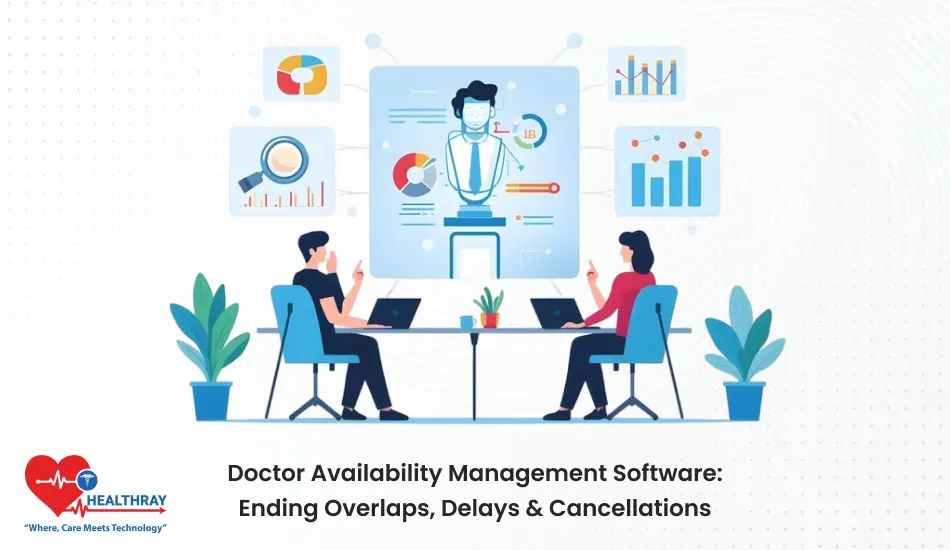Summary
The world of healthcare is becoming more connected and clearer. FHIR-based EMR integrations connect hospitals, labs, and apps into a single digital environment. With modern EMR software and EMR medical solutions, data flows easily, care speeds up and patient experiences improve.
It’s not just technology. It’s systems and doctors and patients working together. The best EMR software in India shows that the future of healthcare is smart, secure and connected beautifully through one language: FHIR.
Introduction
When you go to a restaurant, the chef, the waiter and the cashier finally sync with one another. Orders are taken efficiently, meals arrive when they should, and your pasta does not end up atop someone else’s pizza. This is exactly what health care feels like today, and it is all tied together.
So, what’s the secret sauce? FHIR-based EMR integration.
Doctors have spent years losing reports, muddling their records and hearing from befuddled patients. But now, thanks to this tech voodoo, information is flowing free and fast.
Smart EMR software spits out complete narratives in seconds; much of the work is done for you. Labs, clinics and pharmacies are networked like a well-trained restaurant crew. So, let’s peer behind the counter and see how FHIR-based EMR integration is delivering truly seamless health care.
What Is FHIR-Based EMR Integration?
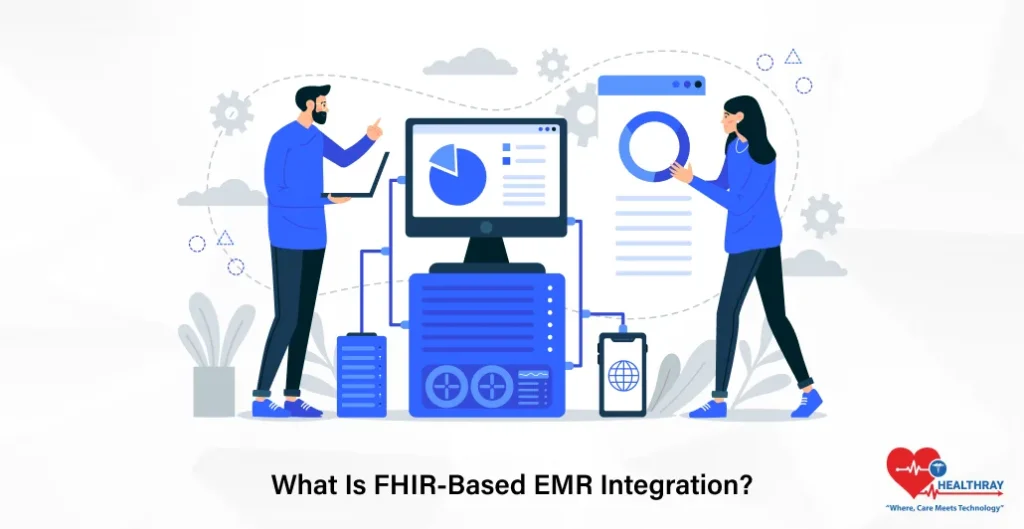
Now imagine all your healthcare systems finally speaking the same language, that is the promise of FHIR-based EMR integration.
First, let’s unpack what it means: FHIR stands for Fast Healthcare Interoperability Resources, a standard created by HL7 International. It prescribes how healthcare data should be structured and transmitted so that it can move between systems without impediment.
Once that is established, FHIR-based EMR integration connects disparate systems, clinics, hospitals and labs through smart APIs. These systems talk to each other in near real time, eliminating data silos. They don’t just transfer files; they transfer meaningful units of data so that records are synchronized across platforms.
Many providers select EMR software with FHIR-ready API modules for the purpose of streamlining data exchange. Meanwhile, organisations deploy EMR medical solutions applications and platforms built for specific workflows that utilise FHIR data flows to connect care teams, labs, and even patient-facing apps.
Understanding HL7 Standards and FHIR
Back in 1989, healthcare data was in code, literally. The HL7 V2 standard came to the rescue of hospitals sinking under mismatched systems. It improved communication among electronic records, lab reports, billing tools and hospital systems. Before that, patient data had the same experience of passing secret notes in a foreign language, slowly, confusedly, with lots of room for error.
However, now the FHIR-based EMR integration is taking the old HL7 idea and turbocharging it for modern times. While HL7 V2 dealt in clunky ASCII messages that required complicated formatting, FHIR uses APIs that web developers are already very accustomed to working with. Think of it as moving from fax machines to instant messaging; same purpose, different speed.
Now, with EMR software built to FHIR, data flows easily from hospitals to labs and even mobile health apps. And here’s the kicker? Developers can easily plug in new tools without breaking the system. These newer EMR medical solutions make the sharing, protecting, and updating of patient information almost automatic. Thus, healthcare teams finally spend their energy where it counts—on patient care, with seamless, real-time connectivity rather than battling difficult data transfers.
Note: FHIR-based EMR integration modernizes healthcare data sharing, replacing outdated systems with seamless, real-time connections that improve patient care.
How FHIR-Based EMR Integration Works?
Let’s examine how FHIR-based EMR integration works in reality.
RESTful APIs – The Bridge That Connects Everything
RESTful API interfaces are central in the integration of EMR software using FHIR. They are web connectors that use normal internet protocols like HTTPS as well as methods like GET, POST, PUT and DELETE.
In simple terms, they allowed healthcare systems to communicate with each other as your favourite apps do. When a hospital updates information on a patient, a linked clinic can see it immediately. This is the power of good EMR software built on RESTful APIs; it fuses everything together seamlessly and securely without long periods of waiting and complicated configurations.
Modular Resources – Building Blocks of Healthcare Data
FHIR defines health information in small pieces called “resources,” which are standardized for common use. Each resource is a single item, such as a patient, an encounter, a diagnosis or a lab result. This packaging unit allows for data to be shared, altered, or reused with minimal ambiguity.
When these resources are managed by EMR medical software, every doctor or hospital sees the same accurate and current information. Since new resources can be introduced at any time without severing existing links, this modularity facilitates ease of upgrading.
Step towards digital era with our healthcare solution
Revamp your hospital facilities and embrace change for better healthcare management. Ease in managing and organizing large medical datasets leads to effective analysis. Seize the opportunity now!
Lightweight Data Formats – Fast and Developer-Friendly
No bulky or hard-to-read formats, as with FHIR. Instead, it uses lightweight ones like JSON and XML. These formats are machine-readable and web developer-friendly. The result? Speedier data transfers, fewer errors and easier integrations.
EMR medical software created using these formats can communicate with one another in nearly real time, even over very large health systems. Developers love it because it saves time, and patients benefit because their records move quickly where needed. This is part of the reason many EMR medical software systems today use these flexible data formats; they make the whole healthcare process faster and more reliable.
Security and Privacy – Protecting What Matters Most
Healthcare data is also highly sensitive, so strong security is crucial. For strong protection, FHIR builds on the well-known, widely implemented OAuth 2.0 authentication protocol. This means that only authenticated and trained professionals can have access to information about patients, and records cannot be manipulated for purposes other than their intended purpose.
The best EMR software today combines this security with convenience; sharing is fast, yet privacy remains in place. Reliable EMR medical software platforms ensure that hospitals are compliant with international standards while allowing users to have secure access in real time.
Flexibility and Scalability – Built for the Future
The beauty of FHIR is its flexibility. Developers can easily plug in new tools, features or apps – like AI analytics, telemedicine modules, or wearable health integrations – without rewriting entire systems.
This flexibility is what makes the best EMR software in India today. These systems allow hospitals to more easily upgrade or expand. In fact, EMR medical solutions based on FHIR help institutions grow digitally and improve patient experience.
How FHIR-Based EMR Integration Improves Interoperability?
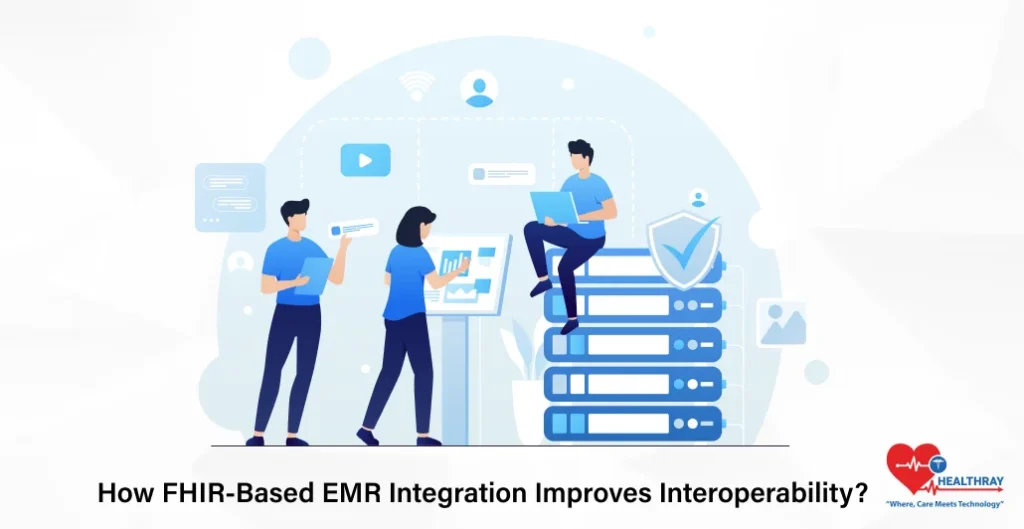
Healthcare finally speaks one language and that is due to FHIR-based EMR integration that makes it clear, quick and connected.
One Language for All Healthcare Apps and Platforms
Picture a hospital where each app, system and device is speaking a different language. Total chaos, right? That used to be how health care worked. The FHIR standard integrates EMR systems into a single common language across all platforms, thus solving this issue. Whether it’s a hospital system, lab software or a mobile health app, they all speak to each other using the shared FHIR “rules.”
And it makes EMR software much smarter. It no longer spends time translating data formats or misaligning codes. Instead, information flows readily between systems, saving doctors and patients’ precious time.
Real-Time Patient Data Sharing and Updates
In legacy systems, it would take more time to update patient data. A lab report transmitted yesterday might be in the hands of the doctor tomorrow. But now, EMR medical software with FHIR has changed everything. Updates occur in real time. As soon as a lab test is complete, the doctor’s dashboard refreshes. The patient’s medications, allergies and test results pop up instantly across systems.
At that speed, life changes – literally. In emergencies, doctors no longer wait for paperwork or for uploads. The immediacy of sharing in real time also helps alleviate miscommunication between departments.
Eliminating Duplicate Tests and Manual Data Entry
Before interoperability, hospitals repeated tests often because older systems couldn’t communicate the results. Patients endured X-rays, scans, and blood tests all for information that had already been collected. This problem is now elegantly solved by FHIR-compliant EMR medical solutions. Once results are uploaded by one department, authorized clinicians have immediate access to them.
Manual data entry, too, is becoming a thing of the past. With EMR software automatically syncing systems, there is less typing as well as fewer errors. That means less gnashing of teeth by staff and better records for patients.
Strengthened Data Security and Compliance
There are concerns, for instance, that speedier data sharing could come at the expense of security. But here’s the twist: FHIR actually strengthens it. Authorization of access to patient information is done according to standard protocols, such as OAuth 2.0, the same security protocol used by contemporary EMR medical software. All requests are authenticated, all actions are logged, and all records are encrypted.
It creates a secure environment for fast sharing. Hospitals don’t exchange privacy for convenience anymore. Instead, they get both. In fact, the best EMR software in India today has FHIR-compatible security architecture and is compliant with international regulations like HIPAA and GDPR.
Easier Integration with Third-Party Apps and Devices
Healthcare is changing quickly, with wearables, telemedicine, and apps. The beauty of FHIR is how easy it is to connect everything. It allows hospitals to run apps developed by other companies for fitness, diagnostics or mental health without disrupting their existing systems.
EMR software that employs FHIR could draw data directly from smartwatches or home monitoring devices. Blood pressure readings, glucose levels and heart rates can be uploaded directly into the patient’s electronic record. The best EMR software in India supports these features well, making it easier for hospitals to innovate. Patients love it too they feel more in control of their health.
Best Practices for Successful FHIR-Based EMR Integration
- Start small, scale up. The most intelligent approach to starting with FHIR-based EMR integration is to start with one department or process first. Many hospitals have found that digitizing everything at once can lead to chaos. Starting small helps a team understand the data flow and where adjustments need to be made.
- Go with vendors that support open APIs. Not all systems integrate well. That is why hospitals should choose EMR software vendors that are supportive of open and flexible APIs. Open APIs ensure secure and easy integration and enable rapid interconnection of new apps in hospitals. The best EMR software in India already adheres to these standards and thus ensures data flows seamlessly between labs/clinics and mobile health applications.
- Test thoroughly for data integrity and security. All hospitals have sensitive data, so testing is more important than speed. Teams must verify all connections, ensure data continuity, and maintain confidentiality. Some EMR medical software applications that are based on FHIR contain testing features to aid in this process. Regular audits keep everything running smoothly and safely. Most of the EMR medical solutions now employ sandbox testing prior to launching them in the real world, thereby minimizing errors in practice.
- Constant training is essential. Even the best EMR software in India can fail if the staff are not comfortable with it. The EMR medical software should be made familiar to everyone by disposing regular training sessions in hospitals. This builds comfort, accuracy, and consistency, leading to better care and better interoperability.
Conclusion
Where once data only whispered, FHIR-based EMR integration allows healthcare to speak in roars. It bridges gaps, speeds up care and turns confusion into connection. With smart EMR software and innovative EMR medical solutions, finally, doctors, hospitals and patients share the same digital heartbeat.
The best EMR software in India is already making the seamless flow of data not a dream, but a new normal. An intelligent network and connected systems, as opposed to disconnected ones, are the future of healthcare and will all lead to better outcomes, faster treatments and ultimately a healthier, more connected tomorrow.
